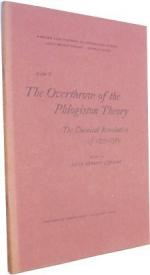|
This section contains 1,688 words (approx. 6 pages at 300 words per page) |

|
Overview
The late seventeenth century saw the rise of the phlogiston (pronounced FLO-jis-ton) theory of fire, which sought to explain the burning of objects. First proposed by Johann Joachim Becher (1635-1682) and Georg Ernst Stahl (1660- 1734), the phlogiston theory evolved into an complete theory of the chemical sciences. It was modified by later followers, giving it coherence, but also exposing its weaknesses. Phlogiston determined the direction that chemistry was to take for the next one hundred years, suggesting not only what experiments to perform, but how to interpret the results. The theory was eventually overturned by the concept of the combustion of oxygen, but only after a protracted series of debates and experiments.
Background
The nature of fire has long been a source of wonder and mystery. Aristotle (384-322 B.C.) combined fire with...
|
This section contains 1,688 words (approx. 6 pages at 300 words per page) |

|


